Key takeaways:
- Visual branding creates an emotional connection and first impression through consistent use of color, imagery, and typography.
- Effective visual branding differentiates a brand in a crowded market, fostering trust and customer loyalty through coherence across all platforms.
- Understanding your audience and regularly testing and refining your visual strategy is crucial for maintaining relevance and connection.
- Tools like Adobe Creative Suite, Canva, and Figma enhance the design process and enable collaboration, aiding in the creation of a strong brand identity.
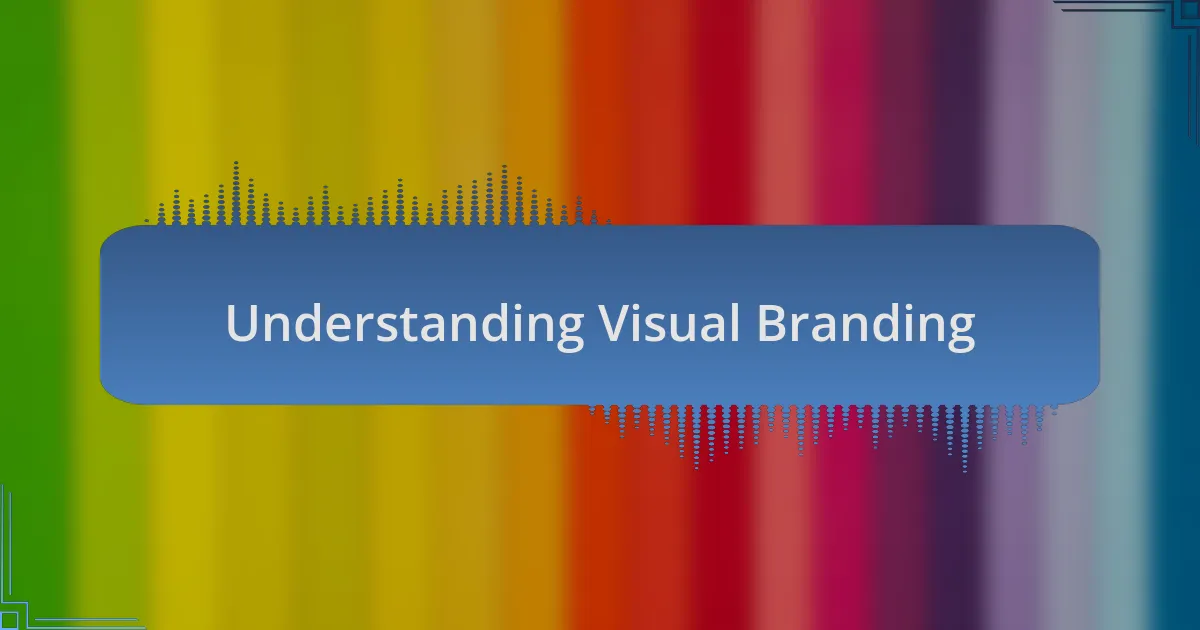
Understanding Visual Branding
Visual branding is more than just a logo or color scheme; it’s the first impression and emotional connection a brand establishes with its audience. I remember the moment I discovered the power of a cohesive visual identity—it completely transformed how I presented my own work. It made me realize that every design choice sends a message, whether intentional or not.
When I think of visual branding, I often ask myself, “What feelings do I want my audience to experience?” This quest for emotional resonance is crucial. For instance, a soft pastel color palette can evoke calmness and trust, while bold, vibrant hues might inspire excitement and energy. It’s fascinating how colors and shapes play into our subconscious feelings, shaping our perception long before we even engage with the content.
Exploring visual branding can feel overwhelming, but I encourage you to consider this: what story does your brand tell through its visuals? Reflecting on my journey, the brands that genuinely resonate with me are those that maintain consistency in every visual aspect. They create an experience that feels authentic, almost as if they’re inviting me into their world. That’s the heart of effective visual branding—it’s all about connection and clarity.
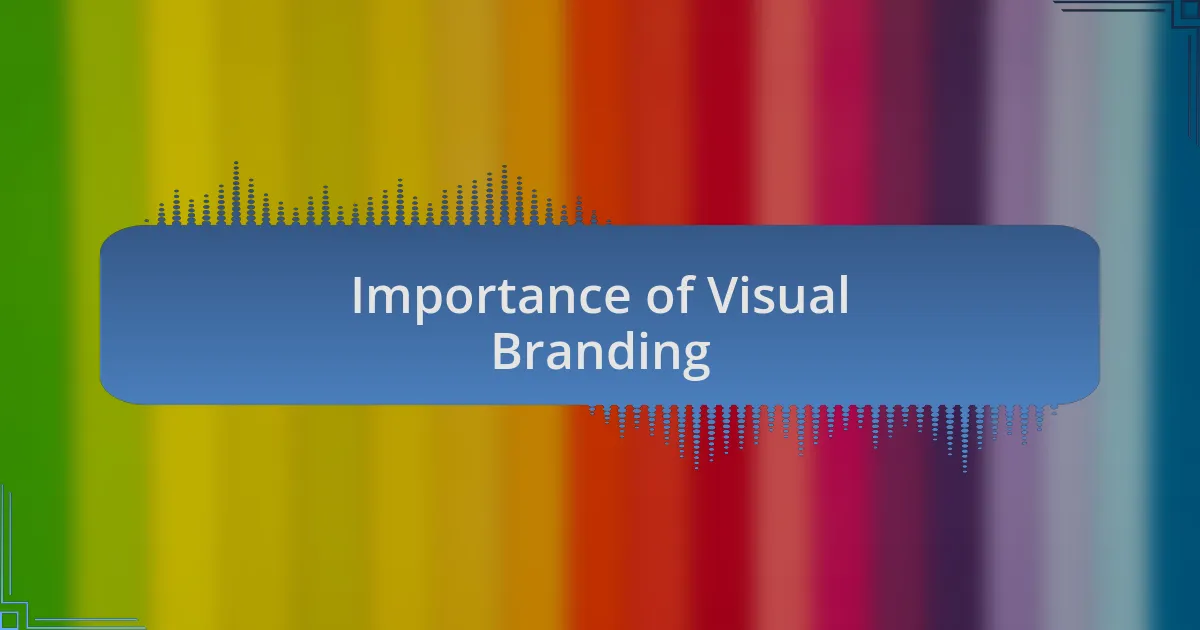
Importance of Visual Branding
Visual branding serves as the backbone of a company’s identity, shaping how customers perceive and interact with a brand. I recall a time when I stumbled upon a new café and was instantly drawn in by its beautiful signage and inviting color scheme. That initial visual experience not only influenced my desire to enter but also set the stage for the warm atmosphere inside. It’s remarkable how first impressions can be forged just through thoughtful design.
Furthermore, visual branding is crucial for differentiation in a crowded market. I’ve often found myself prioritizing brands that communicate their uniqueness through visuals. Take, for instance, the influence of typography. A signature font can encapsulate the essence of a brand’s personality. When I see a playful, quirky typeface, it immediately signals fun and creativity. How does your choice of typography reflect your brand’s voice and mission?
Consistency in visual branding fosters trust and loyalty among customers. I’ve personally connected more deeply with brands that maintain a coherent visual message across all platforms. Think about the brands you admire—how do their consistent visuals impact your perception? When a logo, color scheme, and overall aesthetic remain harmonious, it builds recognition and reliability, making audiences more likely to return time and time again.
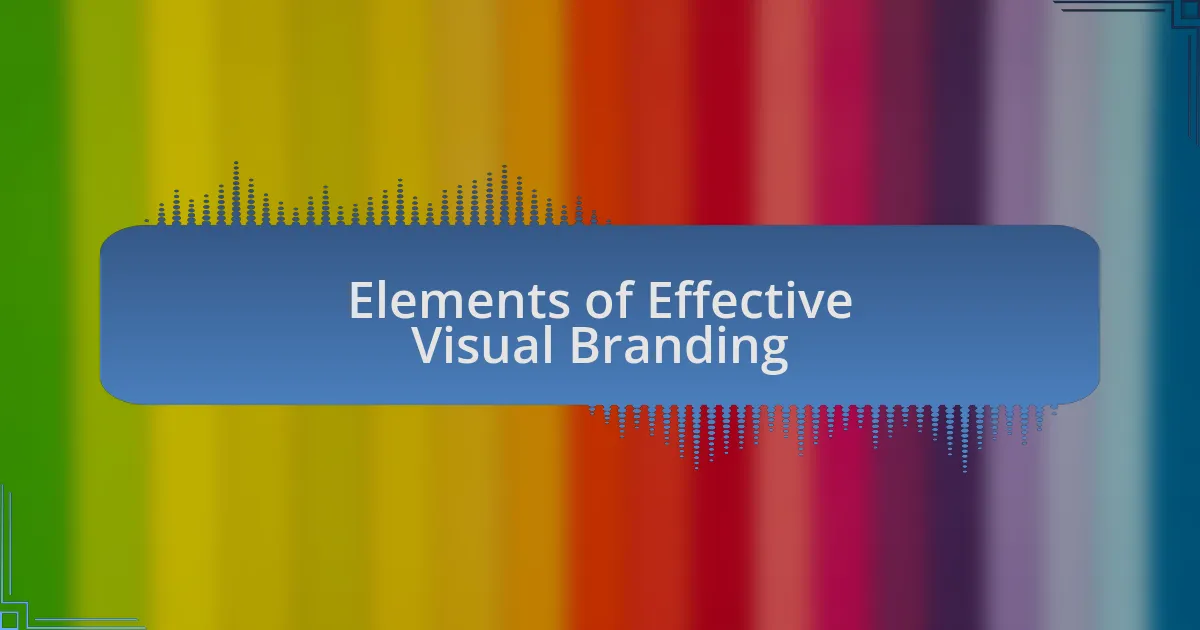
Elements of Effective Visual Branding
When I think about the key elements of effective visual branding, the color palette stands out as a primary component. One of my clients wanted to revamp their image and chose a vibrant color scheme that evoked feelings of excitement and energy. It was fascinating to see how a simple shift in colors could transform their customer interactions and evoke a sense of enthusiasm around their offerings. How do the colors you choose for your brand make people feel?
Beyond color, imagery plays a vital role in shaping visual branding. I once attended a workshop where a speaker showcased brands that used powerful visuals to tell their stories. One campaign featured striking images that not only captivated attention but also conveyed the brand’s mission and values seamlessly. Have you ever noticed how an image can convey emotions that words sometimes can’t? This connection can significantly enhance a brand’s message.
Lastly, I can’t emphasize enough the importance of logo design. Logos serve as a visual anchor for a brand. I remember working on my own logo and the amount of thought that went into ensuring it represented my mission clearly and simply. A well-crafted logo sticks in the minds of customers, acting as a visual cue that evokes familiarity and trust. What does your logo say about who you are as a brand?
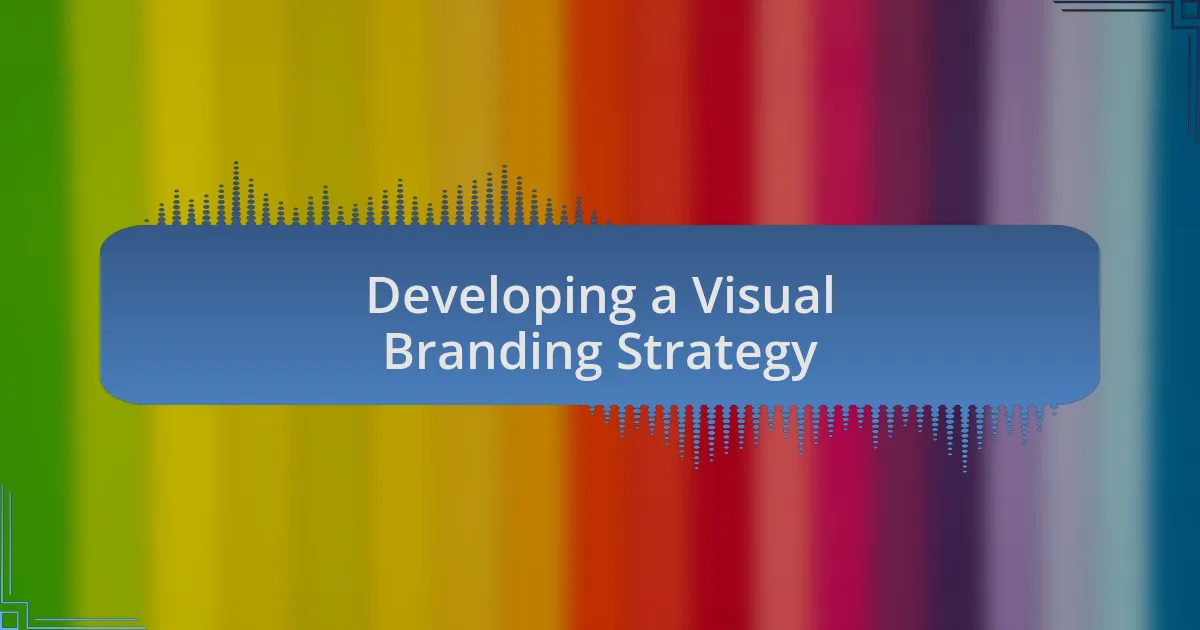
Developing a Visual Branding Strategy
When developing a visual branding strategy, it’s essential to begin with a clear understanding of your audience. I recall a project where we conducted surveys to pinpoint our target demographic’s preferences and emotional triggers. This step allowed us to align our visual elements with what resonated most, ultimately fostering a deeper connection with potential customers. Have you ever considered how well you know your audience’s visual tastes?
Next, consistency is paramount. I remember collaborating on a brand that had varying visual elements across different platforms. It felt disjointed and confused potential customers. By streamlining their visual presence—from social media to packaging—we created a cohesive identity that customers could easily recognize. What do you think happens when a brand fails to maintain consistency?
Finally, I believe that testing and reiterating your visual branding strategy can yield invaluable insights. For instance, I once ran a small A/B test comparing two different visual approaches for an ad campaign. The results revealed not just performance metrics but also surprising emotional responses from our audience. This experience taught me that visual branding isn’t static; it evolves and should adapt to what your audience truly wants. How often do you revisit your branding strategy to ensure it remains relevant?
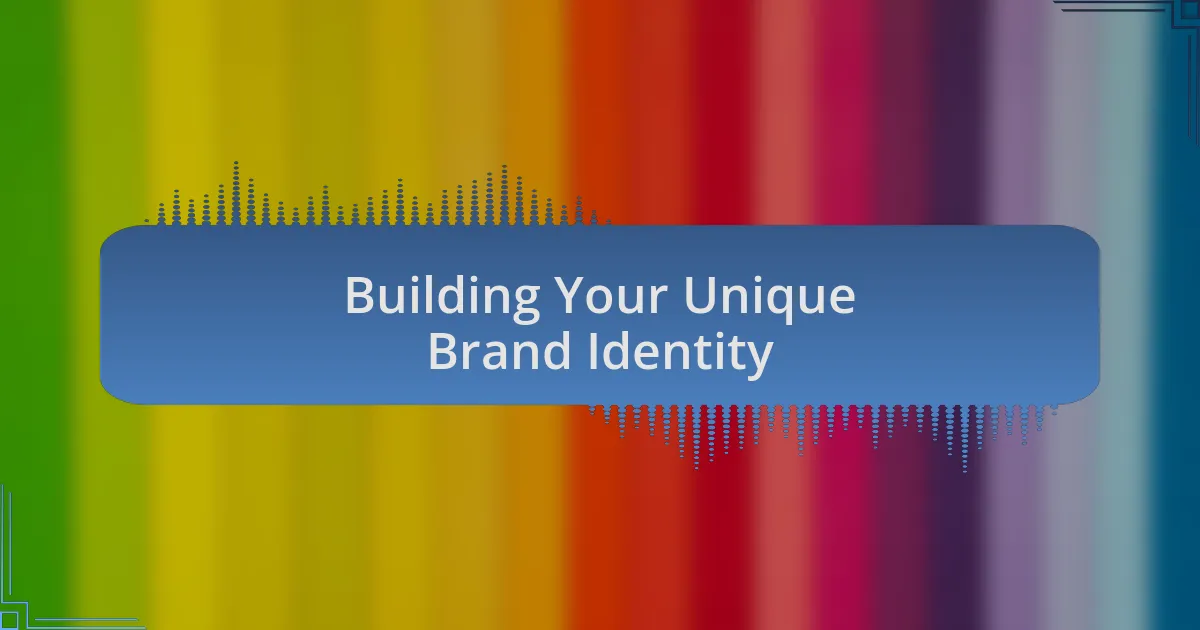
Building Your Unique Brand Identity
Building your unique brand identity starts with defining your core values and mission. I once worked with a client whose branding felt uninspired because they hadn’t clearly articulated what they stood for. Together, we mapped out their core beliefs, and suddenly, their visual representation transformed into a powerful narrative that captured their essence. Have you ever reflected on what truly drives your brand?
The visual components of your identity—like color schemes, typography, and logos—are more than just aesthetics; they evoke feelings and perceptions. In a previous project, I experimented with color psychology, opting for a warm palette to convey friendliness and approachability. The feedback from customers reflected how much they felt drawn to the brand’s warmth. How do your current colors make your audience feel about your identity?
Lastly, your unique brand identity thrives on authenticity. I recall the challenge of helping a brand that tried to mimic a competitor’s style but ultimately felt inauthentic to its original voice. By encouraging them to embrace their unique story, we crafted a visual identity that resonated more deeply with their audience. Have you considered how your own story can set your brand apart in a crowded market?
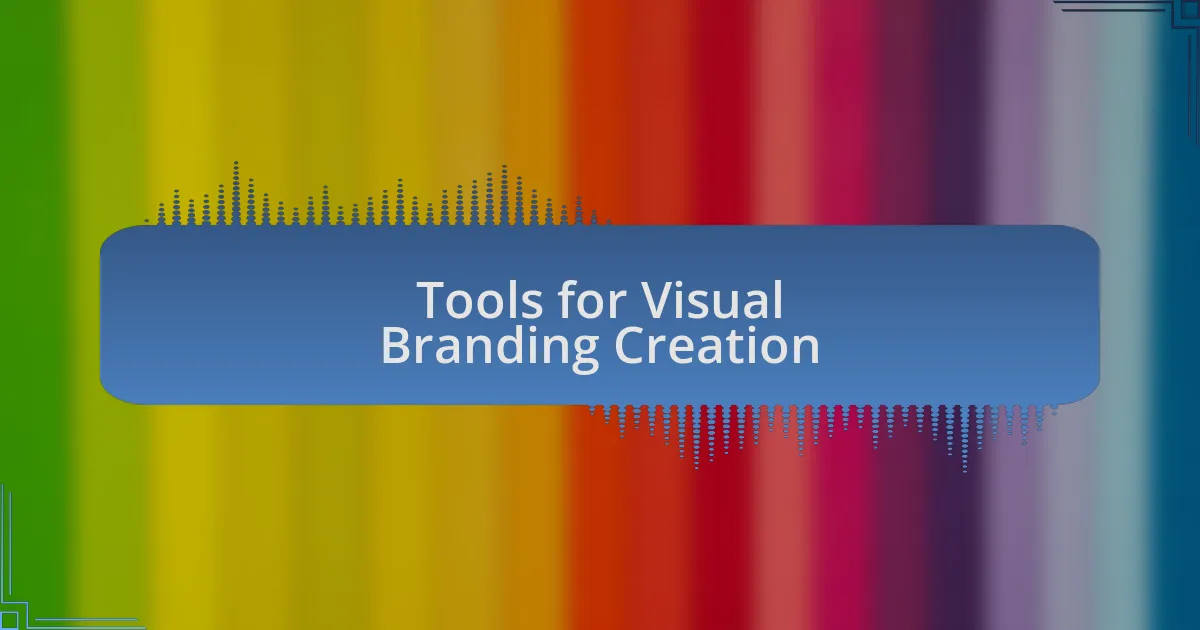
Tools for Visual Branding Creation
When it comes to tools for visual branding creation, I often find myself turning to design software like Adobe Creative Suite. I vividly remember a project where I used Adobe Illustrator to create a logo that truly captured a client’s essence. The flexibility of vector graphics meant I could refine every detail until it felt just right. Do you have a favorite tool that helps you bring your ideas to life?
Another invaluable tool in my arsenal is Canva, especially for those who might not have a design background. Recently, I guided a small business owner in using Canva to create their social media graphics. They were amazed at how easy it was to maintain brand consistency with its user-friendly templates. Could embracing such tools empower your own visual branding journey?
For more advanced visual branding, I recommend exploring platforms like Figma or Sketch for collaborative design projects. I’ve experienced the magic of these tools firsthand when working with remote teams, allowing us to iterate designs in real time. This collaborative environment not only enhances creativity but fosters a stronger connection across team members. Have you considered how collaboration might elevate your branding efforts?
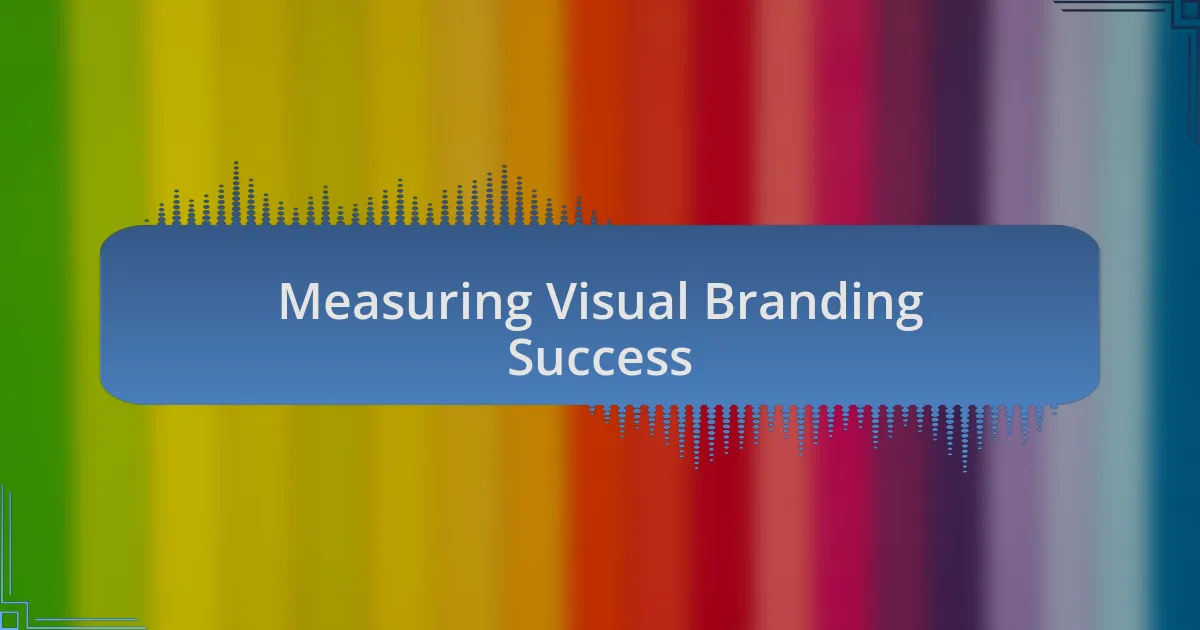
Measuring Visual Branding Success
To measure the success of visual branding, I often look at metrics like brand recognition and engagement levels. I remember a time when a simple logo redesign led to a noticeable uptick in customer inquiries at a local café I worked with. The refreshed visuals captured attention and drew in a crowd eager to see what was new. Have you tracked any changes in engagement after updating your visual elements?
Another important measure is consistency across various platforms. I vividly recall helping a startup maintain their branding across their website and social media. When they unified their visual elements, they noticed a stronger sense of identity and a significant increase in followers. It makes me wonder: how consistent is your brand’s visual storytelling across all channels?
Ultimately, customer feedback is invaluable. In my experience, I once launched a rebranding campaign and sought direct opinions through surveys. The insights collected were enlightening and helped refine the design further. What feedback mechanisms do you have in place to gauge the effectiveness of your visual branding?